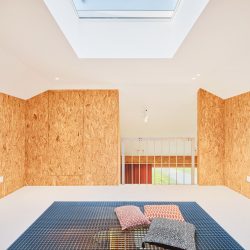
Wirth Architekten . photos: © Caspar Sessler
450 years after the Padua-born architect Andrea Palladio spoke about the differences between town and country houses, noblemen have become builders, and the villa has become a “larger, (…) single-family house on the outskirts of the city”, as the Duden dictionary reports in 2021.
“The town houses are truly noble, splendidly and functionally furnished, since the nobleman must live in them all the time he needs for the administration of the republic or for the conduct of his own affairs. But he will perhaps derive no less benefit and recreation from the villas, where he spends the rest of his time keeping an eye on his possessions and perfecting them, as well as growing his fortune with diligence and with the help of the art of agriculture.“
Andrea Palladio
In Germany, the number of these detached homes, which are no longer occupied by just one family, but by cohabiting couples of all kinds, has been steadily increasing since 2001. There are now 16.02 million of these buildings in Germany (as of 2020) and each of them requires land. This form of housing, which is still the most popular among a large number of Germans, therefore stands in contrast to the realisation that the available resources are finite.
The wooden rotonda takes this into account by minimising its footprint, both literally and figuratively. Every conventional house touches the ground with its ground floor, in some cases penetrating it with a basement. The design therefore reduces the enclosed space on the ground floor and incorporates a cloakroom, a guest WC and a storage room around a central, spiral staircase.The CO2 footprint of the wooden rotunda is also small. The small footprint meant that the use of concrete and insulating material could be minimised. The façade deliberately avoids the local chic of heavy, burnt facing materials, which would have a negative impact on the overall energy balance of the Holzrotonda during production and delivery. Neither installation layers nor plasterboard panelling were used in the interior. This and the absence of composite materials makes potential dismantling and subsequent recycling in line with the cradle-to-cradle principle possible.
_






















